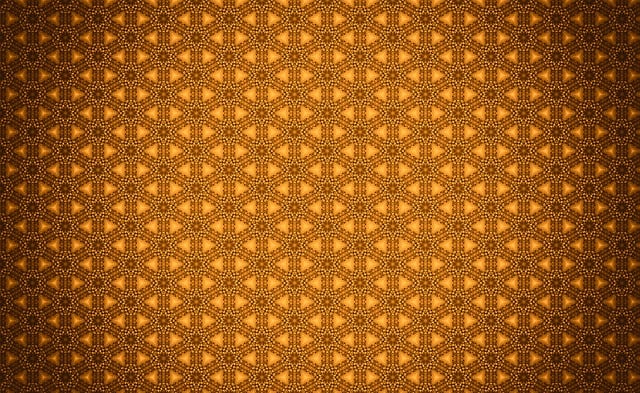Graphic Design is a powerful tool for brands to captivate audiences and drive engagement in today's competitive market. Skilled designers transform ideas into visually appealing messaging using esthetics, typography, color theory, and composition. By integrating images, colors, and layouts, visual storytelling enhances marketing efforts, encourages interaction, and cultivates brand loyalty. Inspiration from diverse sources keeps design dynamic, while typography, color theory, and layout techniques enable creators to craft impactful brand identities and boost user engagement. Case studies from brands like Nike and Coca-Cola demonstrate the effectiveness of creative graphic design in enhancing brand visibility and fostering emotional connections.
Creative marketing design, driven by graphic design principles, transforms brands into captivating stories. In today’s competitive landscape, understanding visual storytelling and innovative concepts is paramount. This article delves into key aspects of creative marketing design from a graphic design perspective, exploring topics like visual storytelling, typography, color theory, illustrative elements, layout design, and typographic illustration. By the end, you’ll grasp how successful campaigns harness these techniques to engage audiences and elevate brand identity.
Understanding Creative Marketing Design: A Graphic Design Perspective

Creative Marketing Design is a powerful tool that leverages graphic design principles to captivate audiences and drive brand engagement. At its core, it’s about transforming raw ideas into visually appealing and impactful messaging. Graphic designers play a pivotal role in this process by translating marketing concepts into concrete visual elements such as logos, brochures, advertisements, and website layouts. They use a blend of esthetics, typography, color theory, and composition to create designs that not only attract attention but also convey the brand’s essence and message effectively.
In today’s competitive market, successful brands recognize the importance of standout design. Graphic designers are the artisans who craft these visually compelling pieces, ensuring they resonate with target audiences. By understanding consumer psychology and leveraging storytelling through visual means, graphic design becomes a game-changer in marketing strategies. It helps build brand identity, fosters emotional connections, and ultimately influences purchasing decisions.
The Role of Visual Storytelling in Captivating Audiences

Visual storytelling is an incredibly powerful tool in the marketing arsenal, especially within the realm of graphic design. It has the unique ability to captivate audiences and convey complex ideas or emotions through visually appealing means. By combining carefully crafted images, colors, typography, and layout, designers can create captivating narratives that leave a lasting impression on viewers. This art form enables brands to connect with their target market on a deeper level, fostering an emotional response that plain text alone cannot achieve.
In today’s digital age, where visuals dominate social media feeds and online content, effective visual storytelling can set a brand apart. Graphic designers play a crucial role in crafting visually compelling stories that not only attract attention but also encourage engagement and interaction. Whether it’s through a series of captivating infographics, eye-catching advertisements, or beautifully designed websites, visual storytelling ensures that brands leave a memorable mark on their audience, ultimately enhancing their marketing efforts and fostering brand loyalty.
Unlocking Inspiration: Sources for Unique Design Concepts

Unlocking Inspiration: Sources for Unique Design Concepts
In the realm of graphic design, inspiration can come from anywhere—a vibrant cityscape, a whispering forest, or even a seemingly mundane object transformed into an artful creation. Successful designers often attribute their creative prowess to their ability to draw inspiration from diverse sources. From nature’s intricate patterns to historical architecture and contemporary pop culture, every element holds the potential to become a unique design concept. For instance, a designer might find inspiration in the fluid lines of a river, translating that organic flow into a captivating visual narrative for a brand.
Exploring various artistic movements, cultural trends, and even personal experiences can open doors to innovative ideas. By constantly seeking fresh perspectives and immersing themselves in different environments, designers can unlock their creativity. Online platforms and design communities also play a pivotal role by sharing diverse portfolios and fostering collaborations, enabling designers to draw from a global wellspring of inspiration. This continuous quest for inspiration keeps graphic design dynamic and ensures that each project offers a fresh twist on visual storytelling.
Typography 101: Choosing the Right Fonts for Impactful Messages

In the realm of graphic design, typography is a powerful tool that can make or break a marketing campaign. Choosing the right fonts is an art and a crucial step in delivering impactful messages. The font selection process involves understanding your target audience, the tone you wish to convey, and the overall aesthetic of your design. Each font has its own personality—from sleek and modern to classic and elegant—and these characteristics can significantly influence how viewers perceive your brand or message.
When selecting fonts for creative marketing designs, it’s essential to consider readability and visual hierarchy. A well-paired combination of primary and secondary fonts ensures that text remains legible while allowing for design variety. For instance, a clean sans-serif font for body copy paired with a bold serif font for headlines can create a striking contrast, drawing attention to key messages. This fundamental aspect of typography is where graphic designers showcase their skill, ensuring the right fonts enhance the overall impact and effectiveness of marketing collateral.
Color Theory and Its Influence on Brand Identity

Color theory plays a pivotal role in graphic design, significantly shaping brand identities. The psychological impact of colors is profound; for instance, red often evokes passion and urgency, while blue instills trust and calmness. Mastering this theory allows designers to select hues that resonate with a brand’s values and target audience. A well-chosen color palette can instantly convey a brand’s personality, fostering emotional connections with consumers.
In the realm of creative marketing design, understanding color theory is essential for crafting visually appealing and impactful collateral. It guides the selection of colors that not only attract attention but also communicate the desired message consistently across various marketing channels. This strategic approach enhances brand recognition and leaves a lasting impression, ultimately influencing consumer choices in the competitive market landscape.
Incorporating Illustrative Elements: Adding a Hand-Drawn Touch

Incorporating illustrative elements, especially hand-drawn touches, into graphic design can significantly elevate a marketing campaign’s creativity and visual appeal. Hand drawing adds a unique, personal quality to designs that can make them stand out in a crowded digital landscape. Designers can use this technique to craft compelling characters, intricate patterns, or subtle details that capture the brand’s essence and engage the audience on a deeper level.
This approach transcends the cold, clinical look of digitally rendered graphics, infusing the marketing materials with warmth and character. Hand-drawn illustrations can tell stories, evoke emotions, and create a sense of connection with viewers, making them more likely to remember and interact with the brand. For creative marketers, embracing this style offers a chance to differentiate their work while delivering a powerful visual experience that resonates with consumers.
Layout Design Techniques to Enhance User Engagement

In the realm of creative marketing design, layout design techniques play a pivotal role in enhancing user engagement. Skilled graphic designers employ strategic elements like typography, color theory, and imagery to craft visually appealing layouts that captivate audiences and encourage interaction. For instance, utilizing contrasting colors and well-spaced typography can significantly improve readability, making content more digestible and inviting. Additionally, thoughtfully placed calls-to-action (CTAs) guide users, prompting them to take the desired action, be it clicking a link or subscribing to a newsletter.
Furthermore, innovative layouts that incorporate interactive elements, such as hover effects, animated transitions, or even augmented reality experiences, can dramatically increase user engagement. These techniques not only break the monotony of traditional design but also foster a sense of curiosity and excitement among viewers. By seamlessly integrating brand messaging with engaging visual narratives, graphic designers create layouts that resonate with audiences on both cognitive and emotional levels, ultimately driving higher conversion rates and fostering stronger brand connections.
The Art of Typographic Illustration: Merging Words and Pictures

In the realm of graphic design, the art of typographic illustration stands as a captivating fusion of words and pictures. This unique creative approach transcends the traditional boundaries of text-based designs by weaving visual elements seamlessly with typography. Skilled designers meticulously craft each character, transforming them into artistic illustrations that capture the essence of a brand or message. By merging typefaces with intricate visuals, they create visually stunning compositions that not only convey information but also evoke emotions and leave a lasting impression.
Typographic illustration is a versatile tool in the hands of creative marketing designers. It enables them to tell stories, express ideas, and engage audiences in novel ways. Whether it’s a playful use of characters, abstract shapes formed by text, or literal representations of words as images, this technique adds depth and personality to marketing campaigns. In today’s digital landscape, where visual content reigns supreme, typographic illustration ensures that brands stand out, leaving a memorable impact on their target audience.
Case Studies: Successful Creative Marketing Campaigns

Successful creative marketing campaigns often serve as compelling case studies for other businesses looking to elevate their brand and engage their target audience. One standout example is Nike’s “Just Do It” campaign, which has been a beacon of inspiration for Graphic Design enthusiasts worldwide. Through innovative visuals and powerful messaging, this campaign has transcended mere advertising, becoming an iconic symbol of motivation and empowerment. By studying such campaigns, marketers can gain valuable insights into the impact of visually stunning and conceptually strong designs.
Another notable case is Coca-Cola’s global “Share a Coke” promotion. This campaign utilized graphic design to personalize millions of bottles with common names, encouraging sharing and social interaction. The simplicity yet creativity of this approach resulted in immense consumer engagement and widespread brand awareness. It showcased how thoughtful Graphic Design can transform a routine product into a cultural phenomenon, fostering connections between people and brands.
